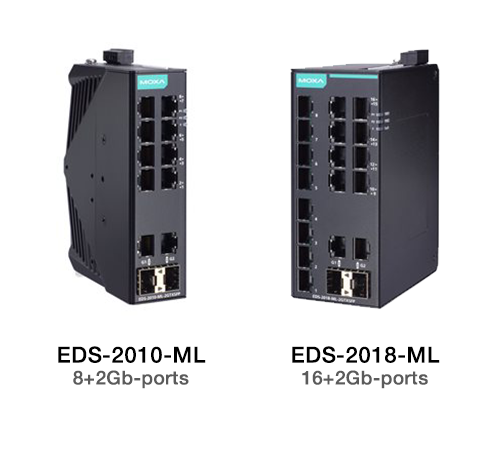When Ethernet comes to the factory floor, selecting the right switch is an important part of ensuring the efficiency of your new network. This can be achieved through the use of unmanaged switches.
Unmanaged switches enable Ethernet devices on the factory floor to communicate with one another automatically using auto-negotiation to determine parameters. These switches are best suited for factories with limited networking resources whose focus is on ease of deployment. This is because the unmanaged switch is a plug-and-play device. OT engineers only have to plug the switch in for it to work. When selecting an unmanaged switch for your factory network, there are a few things you should consider.

As factory network infrastructures grow, so too does the number of ports being used on a switch. Running out of available ports, referred to as low port density, is a common issue for OT engineers. When choosing your unmanaged switch, using an option with higher port density while staying within budget could save time and money down the line.

In manufacturing, machines are constantly sending and receiving large amounts of data on a network. As traffic increases, there is a potential risk of packet loss, jitter or network failure, which can be extremely costly. One way to assure your network operates at peak performance is to select an unmanaged switch that includes QoS (Quality of Service). Essentially, QoS is designed to assign priority to critical data on your network, such as control messages. To make it even easier, Moxa’s unmanaged switches include a physical DIP switch that can enable QoS with a simple flip of the switch.

Being able to choose your connection option on an unmanaged switch allows you more versatility on the factory floor. Having Gigabit uplink combo ports on your switch means you have the flexibility of using copper or fiber with high throughput. Many industrial applications require fiber communication. Fiber offers the benefits of device communication over long distances and protection from interference that may be present in industrial environments.

EDS-2010-ML Series / EDS-2018-ML Series
Common Features and Benefits
Can your switches keep up with the change and demands of your factory? If any of the above challenges apply to you and your applications, you may consider using an unmanaged switch.

Be the first to learn about classes, training, webinars, products news and more.
We use only necessary cookies on this website to provide the best user experience and customer service.